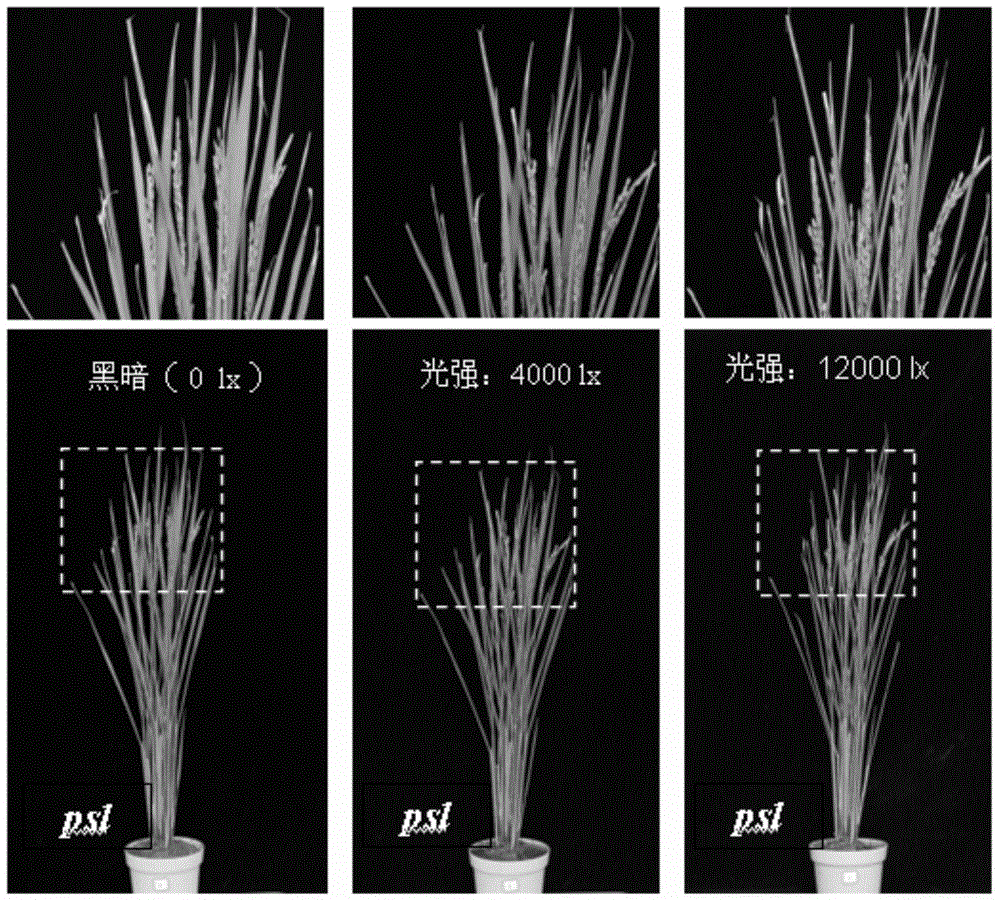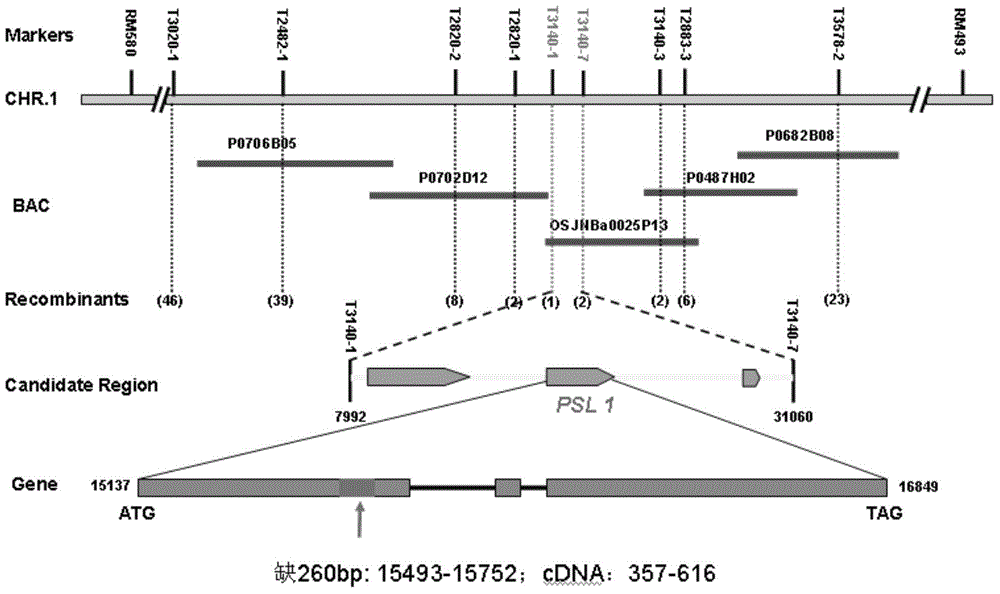Paddy rice photosensitivity semi-rolled leaf (PSL1) gene and application thereof
A light-sensitive, genetic technology, applied in applications, genetic engineering, plant genetic improvement, etc., can solve problems such as genetic research that has not been reported
- Summary
- Abstract
- Description
- Claims
- Application Information
AI Technical Summary
Problems solved by technology
Method used
Image
Examples
Embodiment 1
[0040] 1. Rice material
[0041] Rice (Oryza sativa L.) mutant PSL1 (photosensitivity semi-rolled leaf), the original wild-type material is the japonica rice variety "Nipponbare". Rice (Oryza sativa L.) mutant PSL1 (Semi-rolled leaf 1) was treated with 1% (W / V) concentration of chemical mutagen (ethyl methane sulphonate, EMS) from the japonica variety "Nipponbare". , and then obtained a phenotype-stable mutant PSL1 through extensive screening. Except for the light-sensitive curly leaves of the mutant, other phenotypes are similar to those of the wild type, such as figure 1 shown.
[0042] from figure 1 , we can see that: when in the dark state, the mutant's leaves are in a flat state, when in the light state, the mutant's leaves are in a semi-curled state, and when the light intensity is high, the mutant's leaves It tends to be more polar-curled and cylindrical (that is, the leaves are more curled when the light intensity is 12000lx than when the light intensity is 4000l...
Embodiment 2
[0062] plant transformation
[0063] PCR amplifies a genomic DNA fragment with a full length of 4818bp, including 2018bp of the ATG upstream promoter region of the PSL1 gene, 1713bp of the coding region, and 1087bp of the downstream sequence after the terminator. The primer sequences are 5'-GCGGTACCAAGCCTTATGTTTCTCTGCTTG-3' and 5'- GCTCTAGAGTTGGTTAGGTGATGCTTGTTT-3', this fragment was connected to the pCAMBIA1300 vector to obtain the transformation vector pCAMBIA1300-PSL1.
[0064]This plasmid was transformed into Agrobacterium tumefaciens strain EHA105 by electroporation to transform rice. We used the callus induced by the mature embryos of the mutants, cultured in the induction medium for 2 weeks, and selected the vigorously growing callus as the recipient for transformation. The rice callus was infected with the EHA105 strain containing the binary plasmid vector (pCAMBIA1300-PSL1), co-cultivated in the dark at 25°C for 3 days, and cultured in the light on the selection medi...
Embodiment 3
[0066] Embodiment 3, the method for improving rice leaf shape
[0067] Using the cDNA of the japonica rice variety "Nipponbare" as a template, the primers PSLiF: 5'-GGGGTACCGGACTAGTGCAACTGGCTCGTCTTTCTACC-3' and PSLiR: 5'-CGGGATCCCCGAGCTCCAGGTGACGTTCTCGATGTG-3' were amplified (PCR amplification reaction system and amplification procedure refer to the above) to obtain 412bp PSL1 For the gene fragment, restriction sites Kpn I and Spe I were introduced into the front primer, and restriction sites BamH I and Sac I were introduced into the rear primer. The fragment was ligated into pTCK303 vector in the opposite direction to obtain the interference vector pPSLi. The specific steps are as follows: first, double-digest the fragment and the pTCK303 vector with Spe I and Sac I, perform ligation reaction with T4 DNA ligase overnight at 16°C, transform into DH5a Escherichia coli by heat shock, identify the positive plasmid, and then The plasmid and the fragment were digested with Kpn I a...
PUM
 Login to View More
Login to View More Abstract
Description
Claims
Application Information
 Login to View More
Login to View More - R&D
- Intellectual Property
- Life Sciences
- Materials
- Tech Scout
- Unparalleled Data Quality
- Higher Quality Content
- 60% Fewer Hallucinations
Browse by: Latest US Patents, China's latest patents, Technical Efficacy Thesaurus, Application Domain, Technology Topic, Popular Technical Reports.
© 2025 PatSnap. All rights reserved.Legal|Privacy policy|Modern Slavery Act Transparency Statement|Sitemap|About US| Contact US: help@patsnap.com



